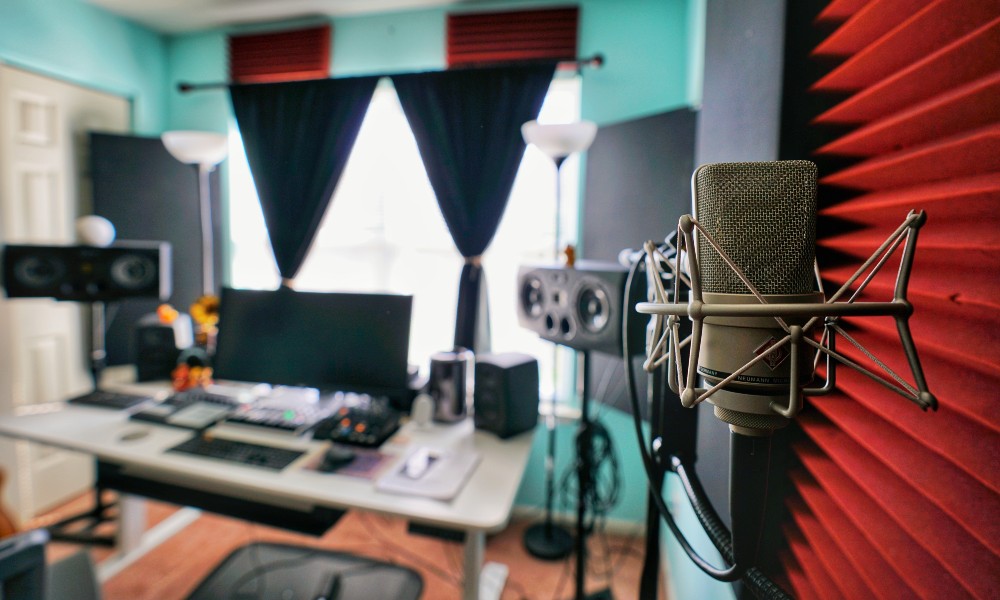Making a professional home recording studio requires insightful design and the right equipment to guarantee top-notch sound and a useful workplace. Here is a manual to assist you with setting up a home recording studio.
Designing Your Studio Space
Room Selection and Acoustic Treatment:
Begin by picking a room that limits outer commotion and vibrations. A room with negligible windows and entryways is great. Whenever you’ve chosen the space, center around acoustic treatment to upgrade sound quality. Introduce acoustic boards on walls and roofs to lessen sound reflections and forestall undesirable reverberations. Bass snares in the corners can assist with overseeing low-recurrence sounds, while diffusers dissipate sound waves to further develop clarity.
Layout and ergonomics:
Orchestrate your studio to work with a productive work process. Position your work area and equipment in a manner that permits you to work serenely without stressing. The perfect balance for your screens is ordinarily framing a symmetrical triangle with your listening position to guarantee exact sound propagation. Guarantee that all fundamental equipment is within simple reach to smooth out your recording and blending process.

Essential Equipment
Audio Interface:
A sound point of interaction is essential for associating your instruments and mouthpieces to your PC. Pick a point of interaction with top-notch preamps and adequate info/yield choices to oblige your necessities, whether you’re recording vocals, instruments, or both.
Studio monitors and headphones:
Put resources into great studio screens for precise sound propagation. Put them on stands or segregation cushions to limit vibrations and reflections. Furthermore, a couple of shut-back earphones is fundamental for itemized checking and blending, giving confinement and clarity.
Microphones and Accessories:
Select receivers in view of your recording needs. A flexible condenser mouthpiece is great for vocals and various instruments, while dynamic receivers are reasonable for stronger sources. Remember extras like pop channels, mic stands, and shock mounts to upgrade recording quality and lessen clamor.
Designing and setting up a home recording studio includes cautious preparation and interest in quality equipment. By zeroing in on acoustic treatment, fundamental stuff, and an agreeable design, you can make a space that improves your imagination and conveys professional-grade recordings.



